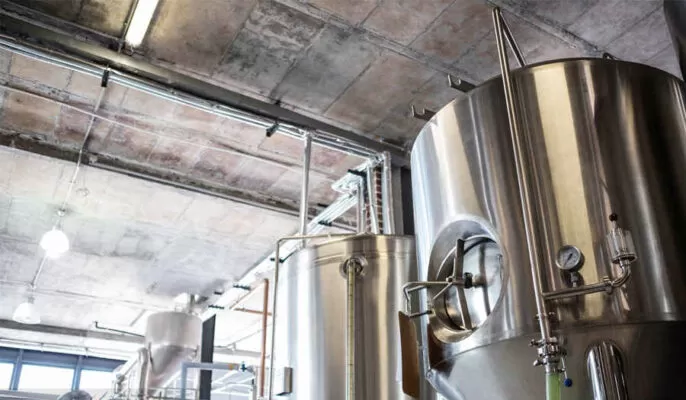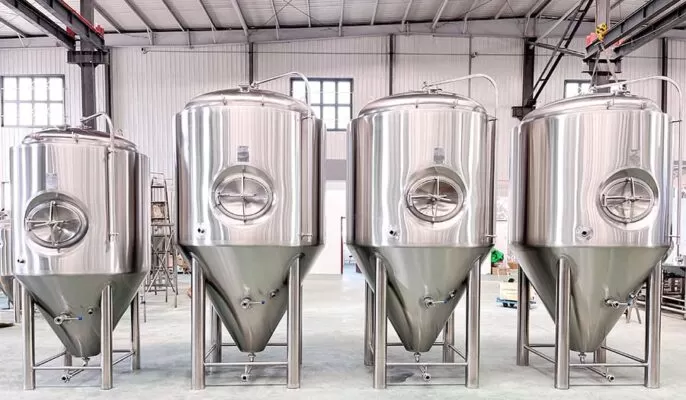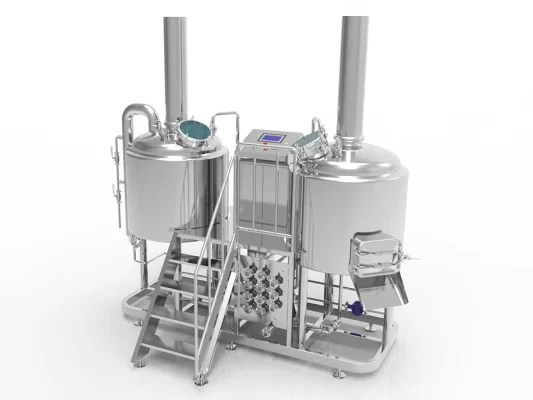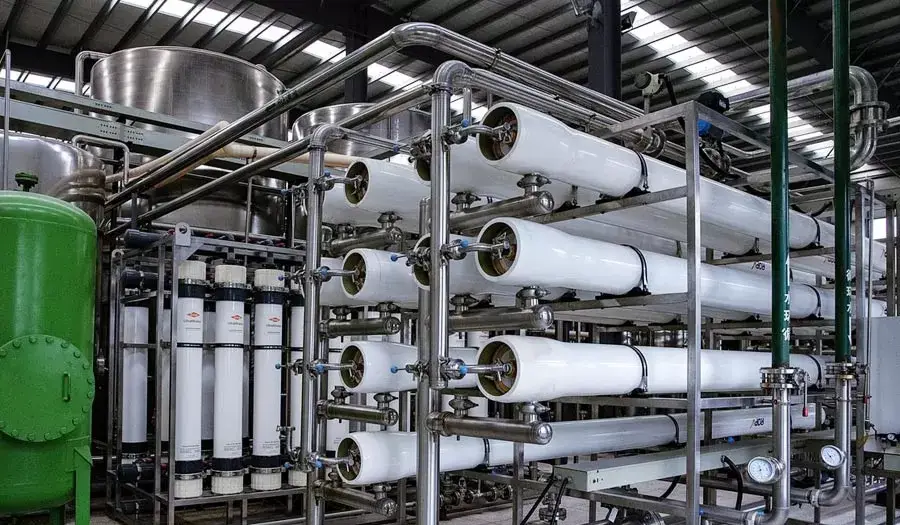Beer brewing has become an increasingly popular activity for restaurants of all types. Having an in-house brewery and taproom can be a major draw for customers and set you apart from other dining establishments. However, successfully operating a restaurant brewery requires the right equipment and understanding the options.
This guide provides restaurant owners and managers with a detailed overview of the major equipment needed for onsite beer production along with information to help select the systems that fit your business goals and constraints.
Overview of Restaurant Beer Brewery Equipment
Setting up a restaurant brewery involves procuring and installing key equipment to handle each step of the beer making process. Here are the main components required:
Brewing Equipment
- Brew kettle – Cooks mash to extract sugars for fermentation
- Lauter tun – Separates wort from grain solids
- Mash tun – Mixes crushed malt with hot water
- Brewing vessels – Hold wort for boiling and fermentation
Fermentation and Maturation Equipment
- Fermentation tanks – Ferment beer and allow maturation
- Brite tanks – Clarify and carbonate beer before serving
- Glycol chillers – Cool fermentation tanks and brite tanks
Transfer Equipment
- Piping – Move liquid between vessels
- Pumps – Transfer wort and beer between tanks
- Hoses – Flexible piping for liquid transfers
Filtration Equipment
- Plate filters – Remove haze and particles from beer
- Centrifuge – Spin out sediment and solids
Carbonation Equipment
- Carbon dioxide tank – Store CO2 for carbonating beer
- Gas mixer – Regulate CO2 infusion levels
Dispensing Equipment
- Beer faucets – Dispense beer from serving tanks
- Draft lines – Deliver beer from taps to faucets
- Cooling coils – Chill beer on way to faucet
Cleaning and Sanitation Equipment
- Clean-in-place system – Automated tank cleaning
- Sanitation chemicals – Cleaners and sanitizers
- Pressure washer – Manual exterior cleaning
Testing Equipment
- Hydrometer – Measure specific gravity and ABV
- Refractometer – Estimate wort sugar content
- pH meter – Test beer acidity levels
Control Equipment
- Thermometers – Monitor mash, wort, and beer temps
- Timers – Track key steps and stages
- Gauges – Monitor pressure in tanks and lines

Key Types of Restaurant Brewing Systems
restaurant beer brewing equipment is available in different configurations from full-scale automated brewhouses to manual systems. Choosing the right setup depends on factors like production goals, space constraints, and budget.
Brewing System Types
Manual Brewing
- Operator performs each task manually
- Lower equipment cost
- Small batch production
- More labor intensive
Semi-Automated Brewing
- Automated boiling and cooling
- Manual material handling
- Larger batch capability
- Moderate cost
Fully Automated Brewing
- Programmable automated system
- High degree of monitoring and control
- Largest batches
- Highest equipment cost
Sizing Considerations for Restaurant Brewing Systems
Properly sizing a restaurant brewery’s equipment is crucial to match production capacity to business needs and goals. Key factors to consider include:
Batch Size
- Barrel (BBL) batch capability
- Match to projected sales volume
- Larger batches increase efficiency
Production Volume
- Target annual or monthly beer volume
- Size for peak demand periods
- Allow for production growth
Floor Space
- Dimensions of tanks and systems
- Room for transfers and workflows
- Delivery access for equipment
Power Supply
- Electric power supply requirements
- Peak power draw for heating
- Phased installation may be needed
Budget
- Total equipment capital expense
- Available investment funds
- Leasing options to spread costs
Staffing
- Labor needed per batch and system
- Level of automation affects staffing
Flexibility
- Ability to produce varied styles
- Room to add tanks as needed
- Modular vs. monolithic setup
Key Components of restaurant beer brewing equipment
The main components and subsystems of a restaurant brewery that must be selected and integrated include:
Brewing Vessels
Brew Kettle
- Direct or indirect heating
- Size matched to batch volume
- Automated valves and controls
Mash Tun
- Mixes crushed malt with hot water
- Controls mash temp and timing
- Filters wort from grain solids
Lauter Tun
- Separates sweet wort from solids
- Spray nozzles for washing
- Sliding top for mash transfers
Boiling Kettle
- Brings wort to a boil
- Adds hops at scheduled times
- Removes proteins and volatiles
Whirlpool
- Settles hop debris after boil
- Sanitary side outlet valve
- Spinning action for sedimentation
Fermentation and Maturation Vessels
Fermentation Tanks
- Closed, sanitary environment
- Temperature control jackets
- Sample ports and cone bottoms
Brite Tanks
- Clarify and carbonate beer
- Serving tanks with cooling jackets
- Floating dip tubes for clarity
Aging Tanks
- Extended beer maturation
- Add oak, fruit, or specialty ingredients
- Programmable temperature profiles
Transfer Systems
Piping
- Food-grade stainless steel
- Sloped for drainage
- Easy to disassemble for cleaning
Pumps
- Centrifugal or positive displacement
- Low shear to protect beer
- Self-priming and easy to CIP
Hoses
- Flexible transfer lines
- Silicon and stainless options
- Quick disconnect fittings
Dispensing Equipment
Draft System
- High quality beer faucets
- Insulated draft lines
- Beer line chillers
Nitro System
- Nitrogen and beer blender
- Specialized faucet and stout line
- Cascading bubble effect
Serving Tanks
- Direct draw or keg couplers
- Double wall glycol jacketed
- Floating pickup tubes
Cleaning and Sanitation
CIP System
- Automated spray balls and cycles
- Tank cleaning and sanitizing
- Reduces manual labor
Cleaning Chemicals
- Caustic and acid cleaners
- Sanitizers like peracetic acid
- Test strips to validate strength
Cleaning Tools
- Brushes, hoses, spray nozzles
- Exterior tank cleaning
- Safety equipment for chemicals
Process Control and Monitoring
Brewery Control Panel
- Touchscreen interface
- Program timing and sequences
- Sensor inputs and data trending
Thermometers
- Measure mash, wort, beer temps
- Probe and infrared options
- Charts temperature profiles
Gauges
- Pressure for transfers and carbonation
- Level indication in vessels
- Flow meters for pumps
Lab Equipment
- Hydrometers and refractometers
- pH meters and titration kits
- Microscopes and staining supplies
Design Factors for Restaurant Brewing Layout
Properly designing a restaurant brewery requires optimizing tank placement, workflow, and space utilization:
Tank Layout
- Group function-based clusters
- Minimize transfer distances
- Allow for expansion
Workflow
- Smooth paths from brewhouse to fermentation to serving
- Avoid crossover or backtracking
- Gravity flow where possible
Ergonomics
- Comfortable working heights
- Easy access to valves and ports
- Lifting equipment as needed
Usable Space
- Room for operators and transfers
- Maintenance access around tanks
- Keep pathways clear
Delivery Access
- Wide doorways and routes
- Forklift access as needed
- Crane positioning for large tanks
Future Growth
- Extra floorspace for expansion
- Utilities sized for capacity increase
- Modular design for incremental adds
Tasting Room
- Customer viewing window
- Theatrical brewery experience
- Self-guided tours
Standards and Codes for Restaurant Brewery Design
Restaurant breweries must comply with applicable plumbing, electrical, safety, and building codes. Key standards include:
Plumbing Codes
- Materials approved for potable water
- Wastewater drainage and venting
- Sloped floors with trench drains
Electrical Codes
- Adequate power supply and panels
- Branch circuits for equipment
- Properly rated and sized wiring
Mechanical Codes
- Ventilation for tanks and spaces
- Fire suppression systems
- Boiler installations as needed
Building Codes
- Occupancy and construction types
- Submittal of architectural plans
- Structural provisions for tanks
licensing
- State and federal brewery licenses
- Health department approvals
- Local zoning for brewpubs
Safety Standards
- Equipment guarding and interlocks
- Emergency eyewashes and showers
- Handling compressed gasses
Refrigeration Codes
- Registration for ammonia systems
- Glycol chiller installations
- Insulation requirements
Sourcing restaurant beer brewing equipment
Many vendors offer restaurant beer brewing equipment ranging from turnkey systems to a la carte vessels. Considerations for procurement include:
Brewery Engineering Firms
- Design full custom breweries
- Integrate tanks and controls
- Experts in workflow optimization
Tank Fabricators
- Build individual brewing vessels
- Offer standard and custom sizes
- Often made locally
Equipment Dealers
- Represent multiple manufacturers
- Bundle packages of components
- Manage logistics and shipping
Direct From Manufacturer
- Buy directly from equipment OEMs
- Better pricing at high volumes
- Can customize features
Buying Used Equipment
- Lower cost for budget projects
- Check for corrosion and wear
- May lack latest features
Import Considerations
- Long lead times for overseas
- High shipping costs
- Need installation supervision
When requesting quotes, provide key specifications like batch size, peak production volume, and space constraints. Review warranty terms, shipping costs, and maintenance agreements.
restaurant beer brewing equipment Costs
The total equipment cost for a restaurant brewery can range from tens of thousands for a small manual system to over a million for an automated 10 barrel brewhouse. Here are typical price ranges:
Manual Brewing (1-3 BBL)
- Total Cost: $30,000 – $75,000
- Brew Kettle: $6,000 – $12,000
- Fermenters: $3,000 – $6,000 each
- Serving Tanks: $2,000 – $4,000 each
- Other Equipment: $5,000 – $10,000
Semi-Automated (3-7 BBL)
- Total Cost: $100,000 – $350,000
- Brewhouse: $50,000 – $150,000
- Fermenters: $4,000 – $8,000 each
- Serving Tanks: $3,000 – $5,000 each
- Other Equipment: $10,000 – $20,000
Fully Automated (7-15 BBL)
- Total Cost: $350,000 – $1,000,000
- Brewhouse: $150,000 – $350,000
- Fermenters: $6,000 – $12,000 each
- Serving Tanks: $4,000 – $8,000 each
- Other Equipment: $20,000 – $50,000
Key factors affecting costs include level of automation, number of tanks, imported vs domestic equipment, and equipment size or capacity. Get multiple vendor quotes before selecting systems.
Tips for Choosing a Restaurant Brewery Supplier
Picking the right equipment supplier is key to getting a properly engineered brewery system. Consider these factors when selecting a vendor:
Relevant Experience
- Past restaurant brewery projects
- Local installations you can visit
- Expertise with full systems
Design Services
- Willingness to customize and optimize
- 3D layout drawings
- Integration of tanks, pipes, controls
Equipment Quality
- High quality brewing vessels
- Domestic or imported fabrication
- Reputable component manufacturers
Customer Support
- Responsive sales and service staff -troubleshooting assistance
- Preventative maintenance plans
Business Stability
- Established vendor with proven track record
- Able to support long warranty periods
- Avoid risky or unproven suppliers
Value Added Services
- Operator training included
- Shipping coordination assistance
- Help arranging installation
Total Project Cost
- Competitive pricing on equipment
- Minimal shipping fees
- Avoid hidden charges
Develop a request for proposal to have vendors bid based on core needs like production schedule, budget constraints, and expansion plans. Compare proposals in detail and check references before committing.

Installation and Facility Requirements
Properly installing brewing equipment requires planning for utilities, site work, and getting systems operational:
Facility Prep
- Floor reinforced for tank loads
- Non-slip epoxy floors
- Sloped to trench drains
- Hot and cold water supply
- Drops for power and gas lines
Equipment Delivery
- Coordinate crane offloading
- Staging area for unpacking
- Protection from weather
Installation
- Anchor tanks securely
- Connect glycol and refrigeration
- Pipe welding and insulation
- Wire up control panels
Utilities
- Electricians run power to panels
- Plumbers connect water lines
- HVAC experts configure exhaust
**Commissioning **
- Inspect tanks, piping, wiring
- Check valve operation
- Test heating, cooling, and transfers
Training
- Review operating procedures
- Hands-on equipment demos
- Practice full brewing process
Calibration and Trial Batches
- Dial in temperature profiles
- Confirm sizing is accurate
- Tweak recipes and processes
Schedule equipment delivery once the site is prepped and ready. Hire experienced contractors for specialty work like glycol piping and refrigeration.
Operating a Restaurant Brewery
Running an efficient restaurant brewery requires standardized procedures, maintenance of equipment, good recordkeeping, and attention to safety:
Documented Processes
- SOPs for each brewing task
- Forms for batch records
- Checklists for cleaning and inspections
Equipment Maintenance
- Preventative maintenance schedule
- Regularly replace worn parts
- Keep spare parts inventory
Recordkeeping
- Batch information and tasting notes
- Tank cleaning and sanitation logs
- Equipment service history
Safety Training
- Proper chemical handling
- Forklift operation procedures
- Emergency response plans
Quality Control
- Lab testing records
- Calibrate instruments
- Sensory evaluation panel
Staffing
- Skilled, trained brewers
- Hospitality and service staff
- Leadership/management
Optimization
- Analyze batch metrics
- Adjust procedures as needed
- Improve efficiency over time
Use log sheets, maintenance calendars, and inventory systems to keep restaurant brewery operations running smoothly.
Cleaning and Maintenance
restaurant beer brewing equipment must be rigorously cleaned and maintained to prevent contamination and produce consistent beer:
Cleaning
Types of Cleaning
- CIP automated cleaning
- COP manual cleaning
- Spot cleaning as needed
Cleaning Schedule
- Clean tanks after each use
- Monthly deep cleaning
- Track on calendar
Cleaning Procedures
- Pre-rinse tank surfaces
- Circulate detergent solutions
- Rinse and sanitize tanks
Verification
- Visual inspection
- Swab samples
- ATP testing for microbes
Maintenance
Preventative Maintenance
- Follow maintenance schedule
- Lubricate pumps and valves
- Check tank seals and gaskets
Replacement Parts
- Keep spare o-rings, seals, gaskets
- Replace worn pump impellers
- Rebuild valves periodically
Tank Repairs
- Fix insulation jackets
- Re-passivate stainless steel
- Repaint exteriors as needed
Documentation
- Log maintenance tasks completed
- Note equipment issues or failures
- Update maintenance calendar
Develop detailed procedures for cleaning tanks, pumps, and draft lines. Stick to the maintenance schedule to get maximum equipment life.
Key Measurements and Analytics
Tracking key performance metrics and beer analytics helps dial in processes and ensure quality:
Process Metrics
- Mashing time and temperatures
- Boil gravity and hop additions
- Fermentation temperature curve
- Cell counts and growth
Production Volumes
- Ingredient usage rates
- Pre and post boil wort amounts
- Beer yield per batch
- Monthly or annual volumes
Lab Tests
- Original and final gravities
- ABV, SRM, IBUs
- PH, DO, carbonation
- Sensory profiles
Energy and Water Usage
- Electricity and gas consumption
- Water usage for brewing and cleaning
- Identify efficiency opportunities
Waste Streams
- Track spent grain amounts
- Wastewater volumes and quality
- Spent yeast harvesting
Product Quality
- Beer color, aroma, foam stability
- Shelf life and staling rates
- Customer ratings and feedback
Equipment Health
- Tank pressure and temperature profiles
- Cleaning efficacy and sterility
- Run hours and maintenance logs
Business Metrics
- Beer production costs
- Revenue and profitability
- Customer traffic and retention
Carefully tracking brewery performance metrics enables process improvements over time. Data collection and analysis is key for operating an efficient restaurant brewery.

FAQ
Q: What size brewing system is typically needed for a restaurant brewpub?
A: A good starting point is a 3-5 barrel brewhouse with 3-4 fermenters and serving tanks. This allows producing beer for both on-premise sales as well as limited distribution.
Q: What are the differences between direct vs indirect fired brewing systems?
A: Direct fired uses gas burners or electric elements in the brew kettle for heating. Indirect fired uses steam jackets or external heat exchangers to heat the wort. Indirect heating gives more precise control.
Q: Should fermentation tanks be vertical or horizontal?
A: Vertical tanks save floorspace and promote sedimentation. Horizontal tanks require less headspace and have easier access for cleaning. Both work well.
Q: How many beer faucets are needed in a restaurant taproom?
A: Plan on 2-3 faucets per predicted tap offering. Leave room to expand. Have extra faucets on hand for special releases.
Q: What temperature are serving tanks typically kept at?
A: 38°F is ideal for keeping beer chilled up until pouring. Use glycol or refrigerated cooling jackets.
Q: Can automated CIP systems fully clean brewing equipment?
A: CIP provides excellent cleaning but floors and exteriors still need manual scrubbing. Visual inspection ensures cleanliness.
Q: What is a typical brewhouse electrical power requirement?
A: Allow for 150-300 amps based on system size. Electric kettles need more power. Size panels to allow capacity growth.
Q: Should water treatment be used for brewing?
A: Yes, treat incoming water to remove chlorine and adjust mineral profile for ideal mash chemistry and beer flavor.
Q: How many personnel are needed to staff a restaurant brewery?
A: Plan on 1-2 brewers depending on size and automation. Plus tasting room staff, managers, and support roles.
Conclusion
Implementing an on-site brewery can provide restaurants and brewpubs with big advantages including unique craft offerings, enhanced customer experience, and added revenue streams. However, the brewhouse equipment represents a major investment that needs careful planning and selection. This guide covers key considerations and components to help restaurants make the right equipment decisions and successfully launch an in-house brewing operation. With modern restaurant brewing systems paired with solid processes, restaurants can profitably produce distinctive house beers at the quality and capacities they need.




